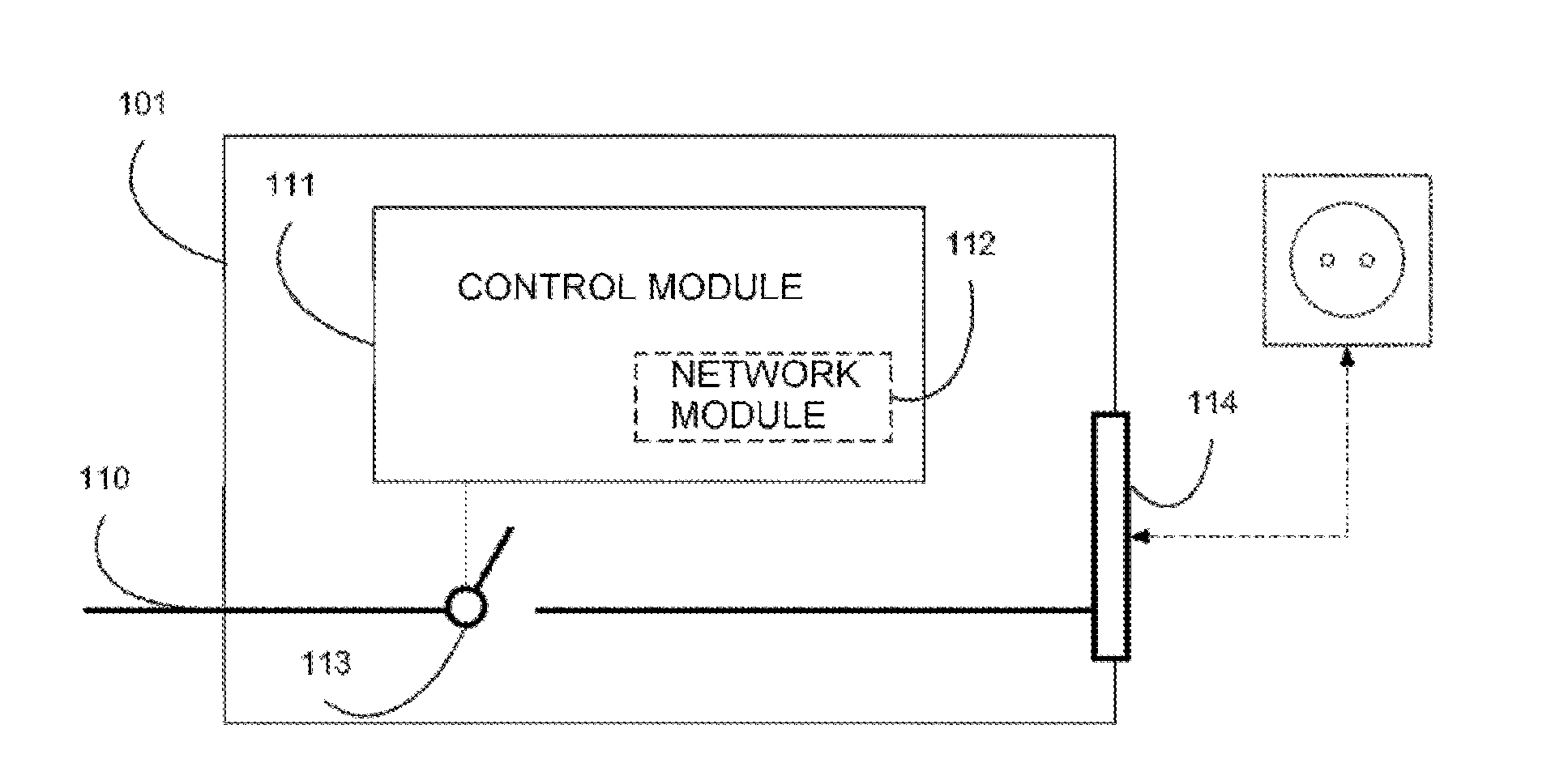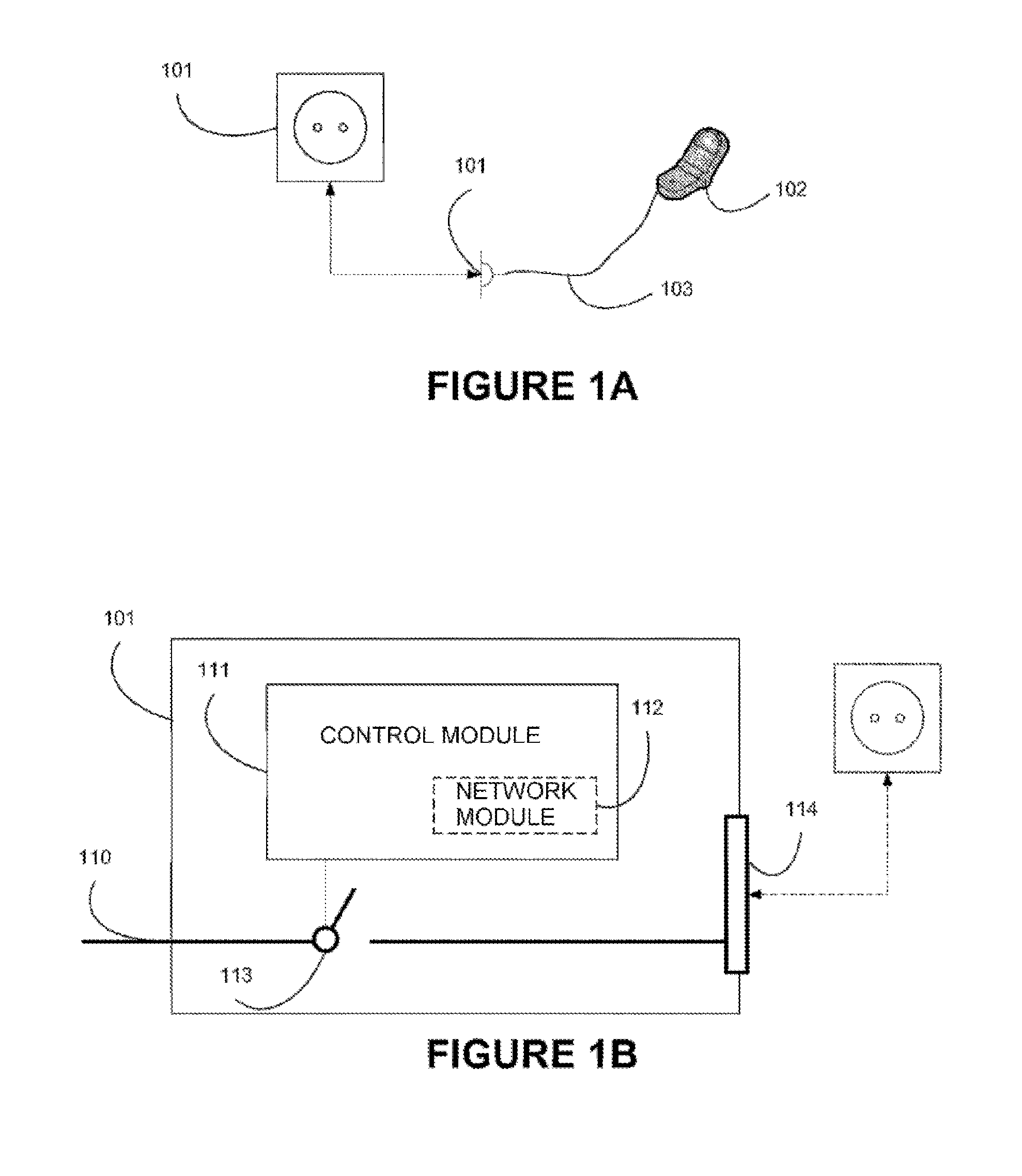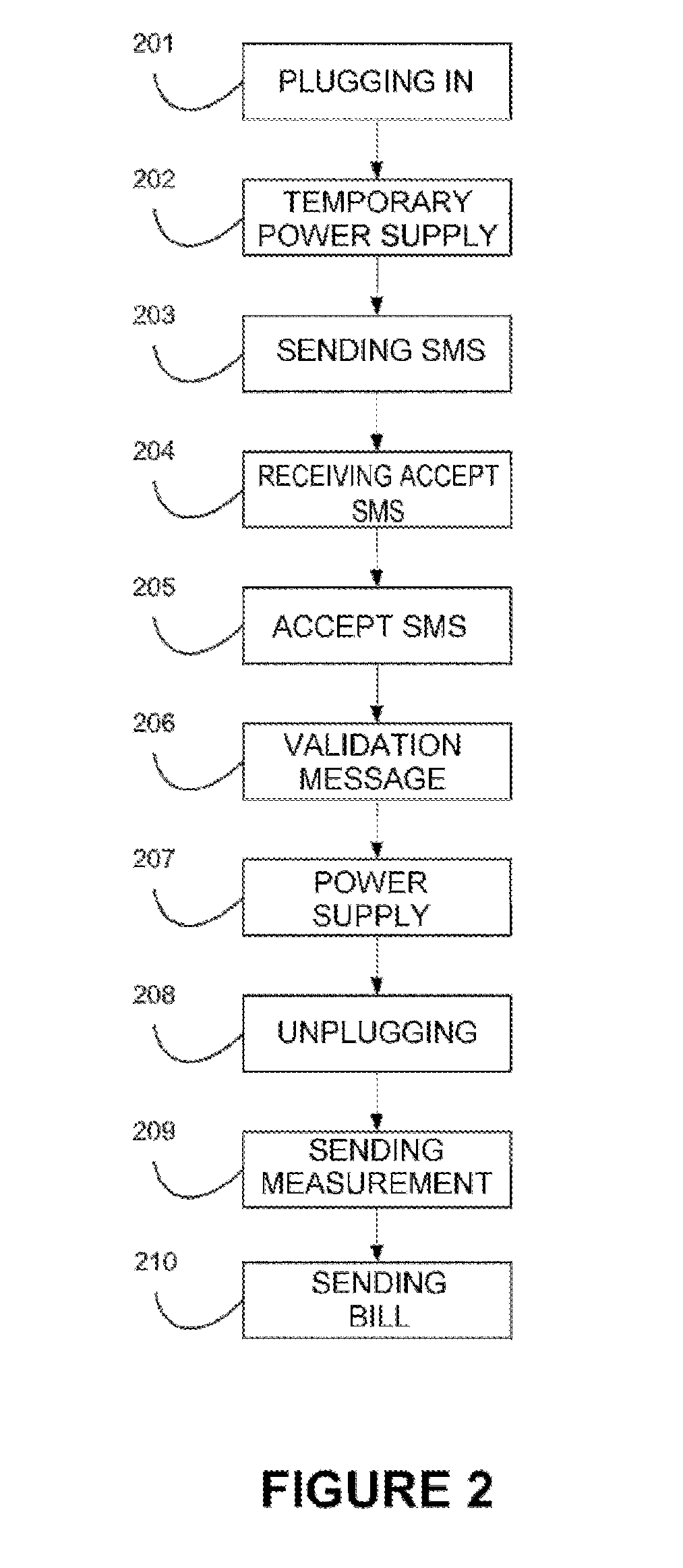Device for powering an electrical appliance
a technology for electrical appliances and devices, applied in the field of electrical appliances, can solve the problems of real problems, complex solutions, and the cost of the power thus offered to users for free, and achieve the effect of avoiding electrical devices from being connected
- Summary
- Abstract
- Description
- Claims
- Application Information
AI Technical Summary
Benefits of technology
Problems solved by technology
Method used
Image
Examples
Embodiment Construction
[0039]FIG. 1A shows an electrical power supply unit such as a female electrical socket conventionally used for allowing an electrical device to be connected via a cable equipped with a male plug. The electrical device is connected then to the electrical power supply unit by plugging in. This same electrical socket is connected to a power source, typically the domestic electrical network (not shown).
[0040]Depending on the implementations of the present invention, the power source used may be different. Specifically, it is possible to envisage the power source being a bank of batteries, potentially equipped with a voltage converter. It is also possible to envisage this same bank of batteries being charged by another power source, such as one or more wind turbines, solar panels, or any other power source potentially known to those skilled in the art.
[0041]In the rest of the present description, it will be assumed that the power source in question is an AC power source at 220 V, thereby...
PUM
 Login to View More
Login to View More Abstract
Description
Claims
Application Information
 Login to View More
Login to View More - R&D
- Intellectual Property
- Life Sciences
- Materials
- Tech Scout
- Unparalleled Data Quality
- Higher Quality Content
- 60% Fewer Hallucinations
Browse by: Latest US Patents, China's latest patents, Technical Efficacy Thesaurus, Application Domain, Technology Topic, Popular Technical Reports.
© 2025 PatSnap. All rights reserved.Legal|Privacy policy|Modern Slavery Act Transparency Statement|Sitemap|About US| Contact US: help@patsnap.com



